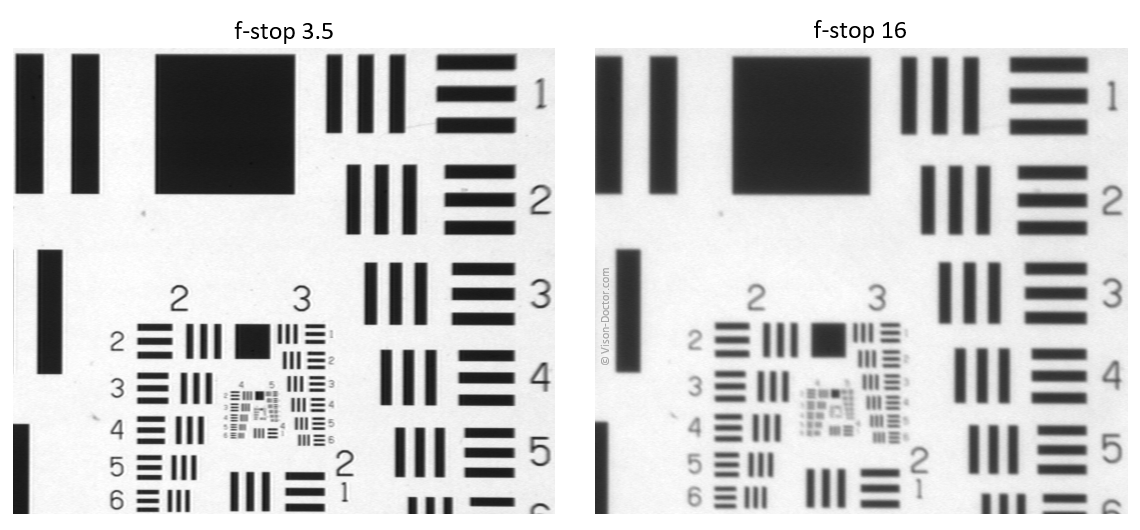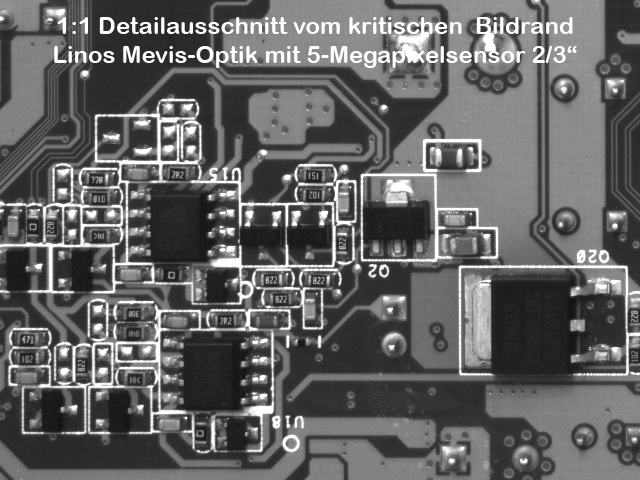Resolution of the optics
In case of measuring applications, the inspection of very fine image details, but also the optic depiction on very small camera pixels, the resolution of the optics is of special interest.
There are clear quality differences which depend massively on the glasses used, the lens coatings and the entire optic design. Particularly optical errors like spherical or chromatic aberration, coma and astigmatism lead to blurred images which cause a significant reduction of the resolution.
Standard lens
High resolution lens
Limitation of the resolution: diffraction effects
The light with its wave-characteristic properties is deflected at the aperture of the lens. The image of an object spot is not represented as a perfect spot but as a slightly blurred light spot surrounded by faint concentric diffraction patterns. The more the aperture of the optics is closed, the more the diffraction patterns overlap: the resolution of the image diminishes!
 |
The diffraction of light at the slit cannot be reduced by any corrective measures, it only depends on the width of the slit (aperture) and the wavelength of the light. Optics of ideal quality do not produce any type of imaging errors, consequently the image sharpness is only defined by the diffraction (diffraction-limited optics)
In practice, however, it becomes apparent that stopping down the lens by approximately 2 f-stops noticeably enhances the imaging quality. Optical errors like coma, astigmatism, spherical longitudinal errors, etc. are reduced by stopping down so that the quality gain of this effect is greater than the reduction of the resolution due to the effect of diffraction at the slit. From stop 8 on, the diffraction effect typically reduces the resolution. Further details are given in chapter "Limiting resolution and MTF".
Important for machine vision
- Pay attention to a high optic quality of your lenses. They should be capable to copy fine structures on the sensor. Above all, the pixel size of the camera sensor is decisive. The smaller the sensor pixels, the higher must be the resolution of the optics!
- Stop the optics down by approximately 2 f-stops if there is sufficient light. Too little light can possibly be compensated by means of better illumination or using an LED flash controller. If the light is too intense and exposing the sensor too little resulted in image impairment, a neutral grey filter might help to avoid having to stop down the lens too much.
- Rather use short-wave light, as the diffraction effects are also related to the wavelength. For the range of visible light it means that you should rather work with blue or green instead of red light.









